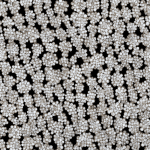In the rapidly urbanizing world, the effects of stormwater runoff have become a significant concern. Urbanization has led to the increase of impervious surfaces, amplifying the volume and velocity of stormwater runoff. This escalation strains our existing water infrastructure and can lead to flooding, water pollution, and degradation of natural habitats. It is crucial for real estate developers to understand how to incorporate sustainable stormwater management techniques within their projects to help mitigate these potential issues.
Green Infrastructure for Stormwater Management
Green infrastructure is an approach to stormwater management that can be integrated into urban real estate designs. This method utilizes natural systems to mimic the way the environment naturally handles rainfall and runoff. Rather than merely draining away stormwater, green infrastructure seeks to treat it as a resource.
A voir aussi : What strategies can real estate developers use to enhance digital and physical accessibility in their projects?
Green infrastructure includes various sustainable practices such as rain gardens, bioswales, and green roofs. Rain gardens are designed to allow rainwater to soak into the soil, reducing runoff and improving water quality. Bioswales are landscape elements designed to concentrate or remove pollution from surface runoff water. Green roofs are covered with vegetation, absorbing rainfall and reducing runoff.
When planning for a real estate development project, consider incorporating rain gardens into the landscape design. Choose a low area of the site that often accumulates rainwater. Plant this area with native, drought-resistant plants that can endure periods of water saturation.
Cela peut vous intéresser : How can the use of prefabricated materials streamline the construction process in real estate development?
Bioswales can be integrated into the site design along roads and parking lots. These landscaped elements can be designed to slow down the flow of stormwater, allowing it to infiltrate the soil and remove pollutants.
Lastly, consider implementing green roofs on any buildings within the project. These roofs not only reduce stormwater runoff but also provide added insulation, reducing energy costs.
Sustainable Stormwater Management Design
When designing an urban real estate project, sustainable stormwater management should be incorporated right from the beginning of the planning process. Designers should strive to minimize impervious surfaces, maximize natural drainage patterns, and treat stormwater as a resource rather than a waste product.
A crucial aspect of stormwater management design is understanding the site’s natural hydrology. Keep existing trees and vegetation to help absorb rainwater, and maintain natural drainage paths to reduce runoff.
Design streets, parking lots, and buildings to be permeable, allowing stormwater to infiltrate into the ground. Use permeable materials such as porous asphalt or pavers for driveways and walkways.
Rainwater harvest systems should be incorporated into building designs. These systems can collect and store rainwater for non-potable uses, such as irrigation or toilet flushing, reducing demand on municipal water supplies.
Urban Areas and Stormwater Runoff
Urban areas, with their abundance of paved surfaces and buildings, pose unique challenges for stormwater management. These impervious surfaces prevent rainwater from infiltrating into the ground, increasing the volume and speed of runoff.
Incorporate strategies such as tree planting and green roofs in urban areas to slow down and capture stormwater. Trees not only intercept rainwater but also promote evaporation and transpiration, reducing runoff. Green roofs capture and slowly release rainwater, reducing the load on the stormwater infrastructure.
Stormwater ponds and wetlands can be incorporated into urban designs where space permits. These features can hold and treat stormwater, improving water quality and providing habitat for wildlife.
Implementing these strategies in urban areas can help manage stormwater sustainably and enhance the environmental performance of urban real estate developments.
Compliance with Local Stormwater Management Regulations
Local governments often have stormwater management regulations that real estate developers need to comply with. These might include requirements for onsite stormwater retention, stormwater quality treatment, and post-development runoff control.
Developers should engage with local planning authorities early in the design process to understand local stormwater requirements. Compliance with these regulations not only helps to protect local water resources but can also improve the marketability of a development project.
Incorporate stormwater management strategies that comply with local regulations and go beyond minimum requirements. This can help to demonstrate a commitment to sustainability and can attract customers who value environmental responsibility.
The Role of Soil in Stormwater Management
Soil plays a critical role in stormwater management. It serves as a natural filter, removing pollutants from stormwater as it infiltrates into the ground. Maintaining healthy soil conditions can improve stormwater management and enhance water quality.
Incorporate strategies to protect and enhance soil conditions in your project. Minimize soil compaction during construction, which can hinder stormwater infiltration. Install soil erosion control measures such as silt fences or sediment basins to protect soil and water quality.
Consider using structural soils under paved areas. These soils are designed to bear the weight of pavements and buildings while still providing space for water infiltration and tree root growth.
Organic amendments can be added to improve soil structure and increase its capacity to absorb and filter stormwater. By taking care of the soil, you can improve stormwater management and contribute to a healthier environment.
The Impact of Sustainable Stormwater Management on Urban Ecosystems
Implementing sustainable stormwater management techniques in urban real estate development has far-reaching positive impacts on urban ecosystems. A well-thought-out design can considerably decrease stormwater runoff, enhance water quality, and provide much-needed habitats for local wildlife.
Developers can incorporate a variety of sustainable practices to enhance the biodiversity of their projects. For instance, rain gardens and bioswales support a wide range of plant species and provide habitats for small insects, birds, and other wildlife. These green spaces not only add aesthetic value to the development but also contribute to local biodiversity.
Green roofs can also be habitats for a variety of plants and insects. In urban areas where space is limited, these roofs can add valuable green space and support urban wildlife. They can also help to reduce the urban heat island effect, a phenomenon where urban areas are significantly warmer than their surrounding rural areas due to human activities.
Water features such as stormwater ponds and wetlands can be a haven for aquatic life. They also provide a valuable ecological function by improving water quality through natural filtration processes.
Stormwater management not only improves the liveability of urban areas for humans but also enhances urban ecosystems. By incorporating these techniques, real estate developers can create sustainable, attractive, and eco-friendly urban environments.
Conclusion
Incorporating sustainable stormwater management techniques into urban real estate projects is a necessity in our rapidly urbanizing world. It is crucial for developers to understand and consider the natural hydrology of their sites and to incorporate green infrastructure and other sustainable practices into their designs.
Green infrastructures such as rain gardens, bioswales, and green roofs not only mitigate the issues associated with stormwater runoff but also add aesthetic value to the development and support local biodiversity. Sustainable stormwater management design involves minimizing impervious surfaces and treating stormwater as a resource rather than a waste product.
Urban areas pose unique challenges for stormwater management due to the abundance of impervious surfaces. However, with careful planning and design, it is possible to manage stormwater sustainably and enhance the environmental performance of urban real estate developments.
Finally, real estate developers must understand and comply with local stormwater management regulations. Incorporating strategies that go beyond minimum requirements can demonstrate a commitment to sustainability and attract customers who value environmental responsibility.
In conclusion, sustainable stormwater management is an integral part of urban real estate development. It helps to protect local water resources, improve water quality, reduce flooding, and enhance urban ecosystems. Implementing these techniques contributes to a healthier and more sustainable urban environment.











